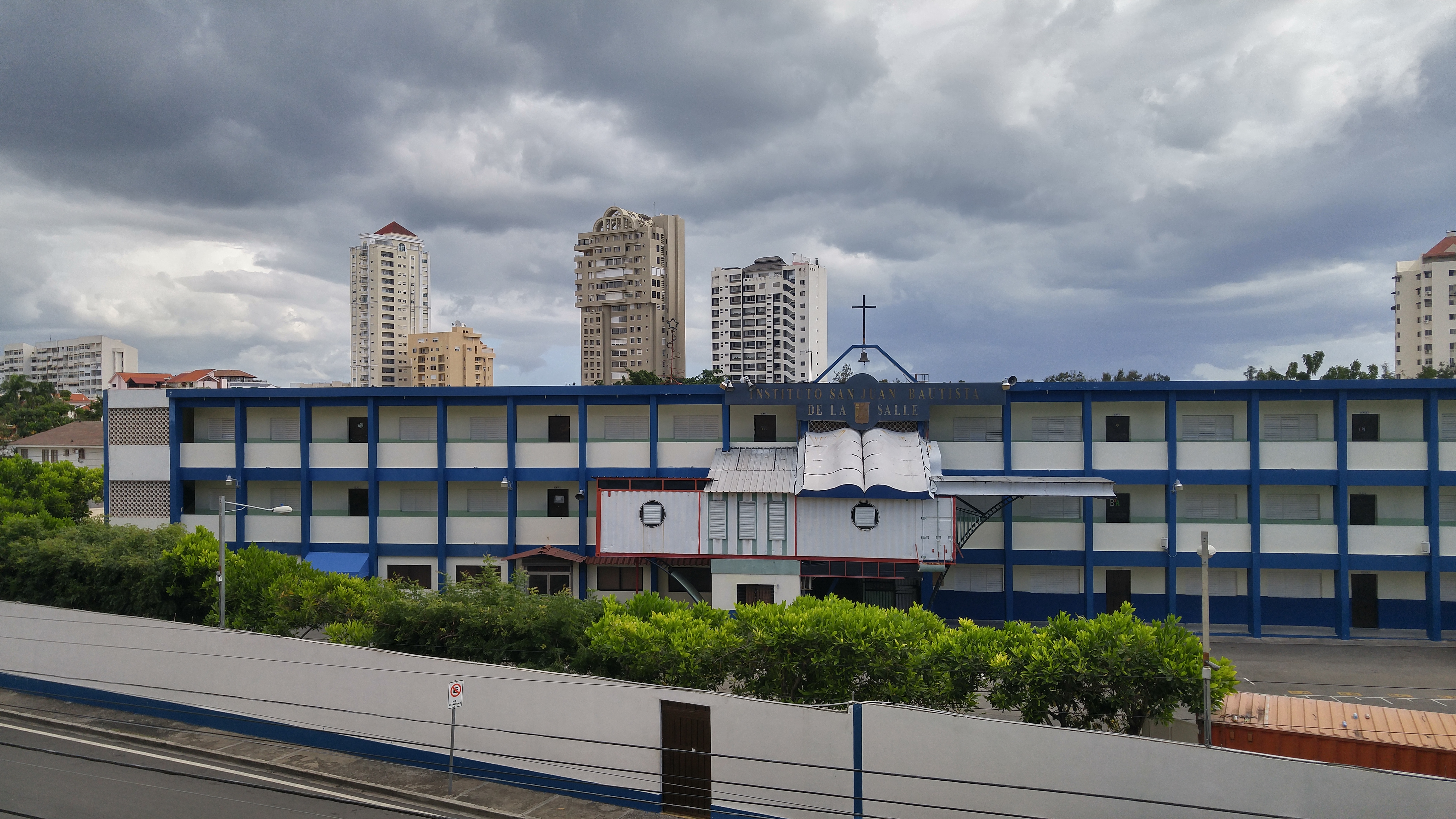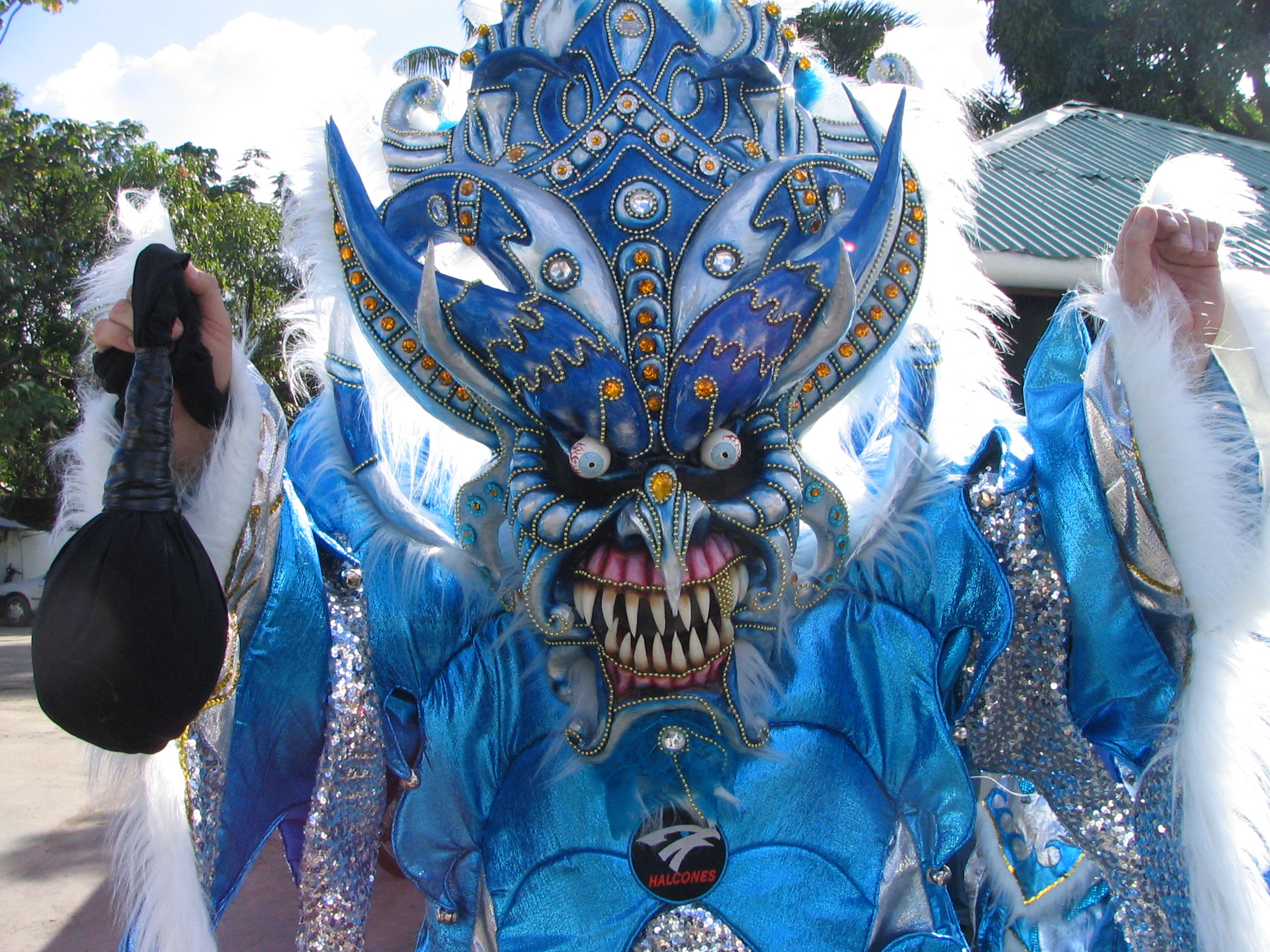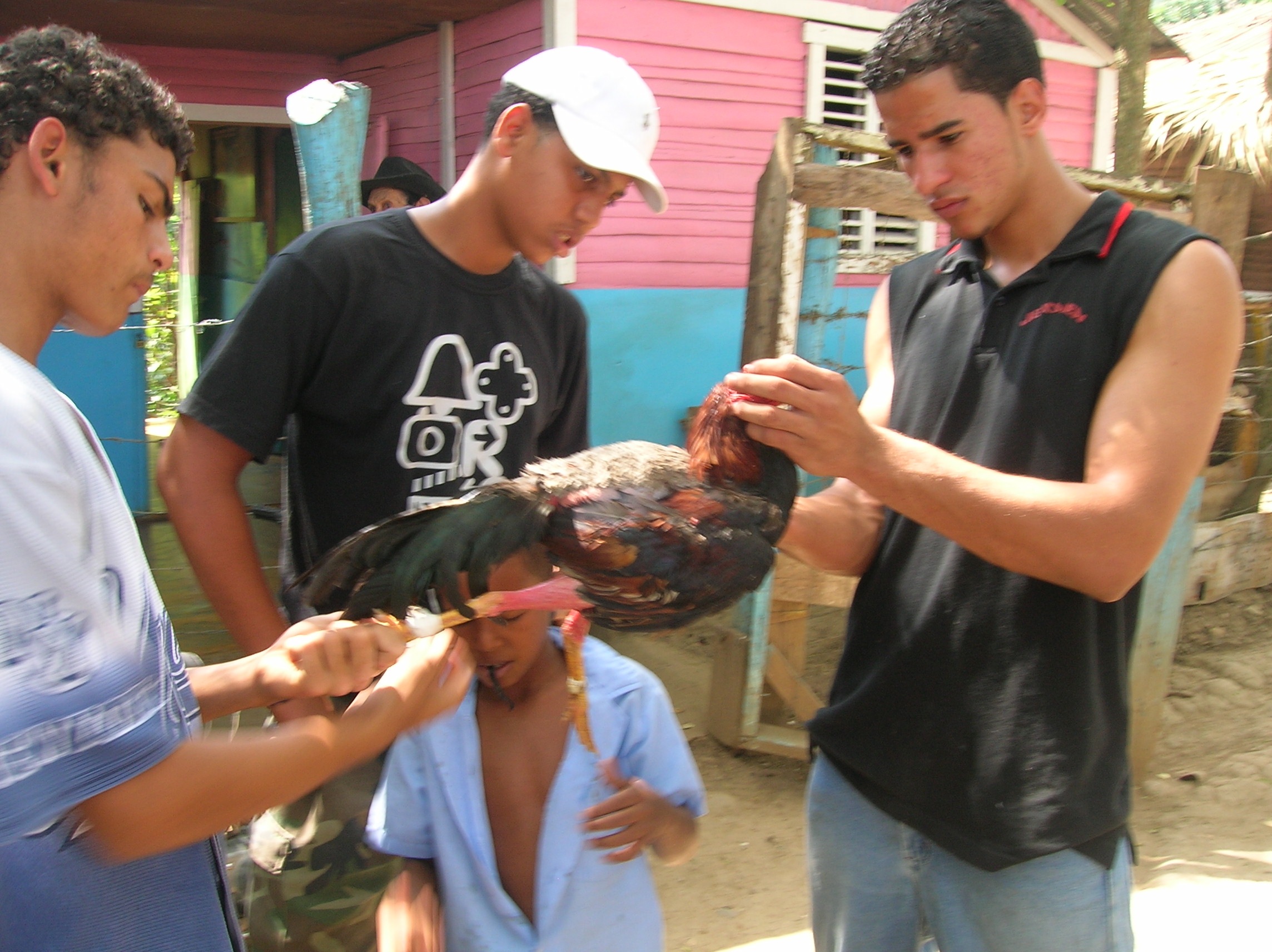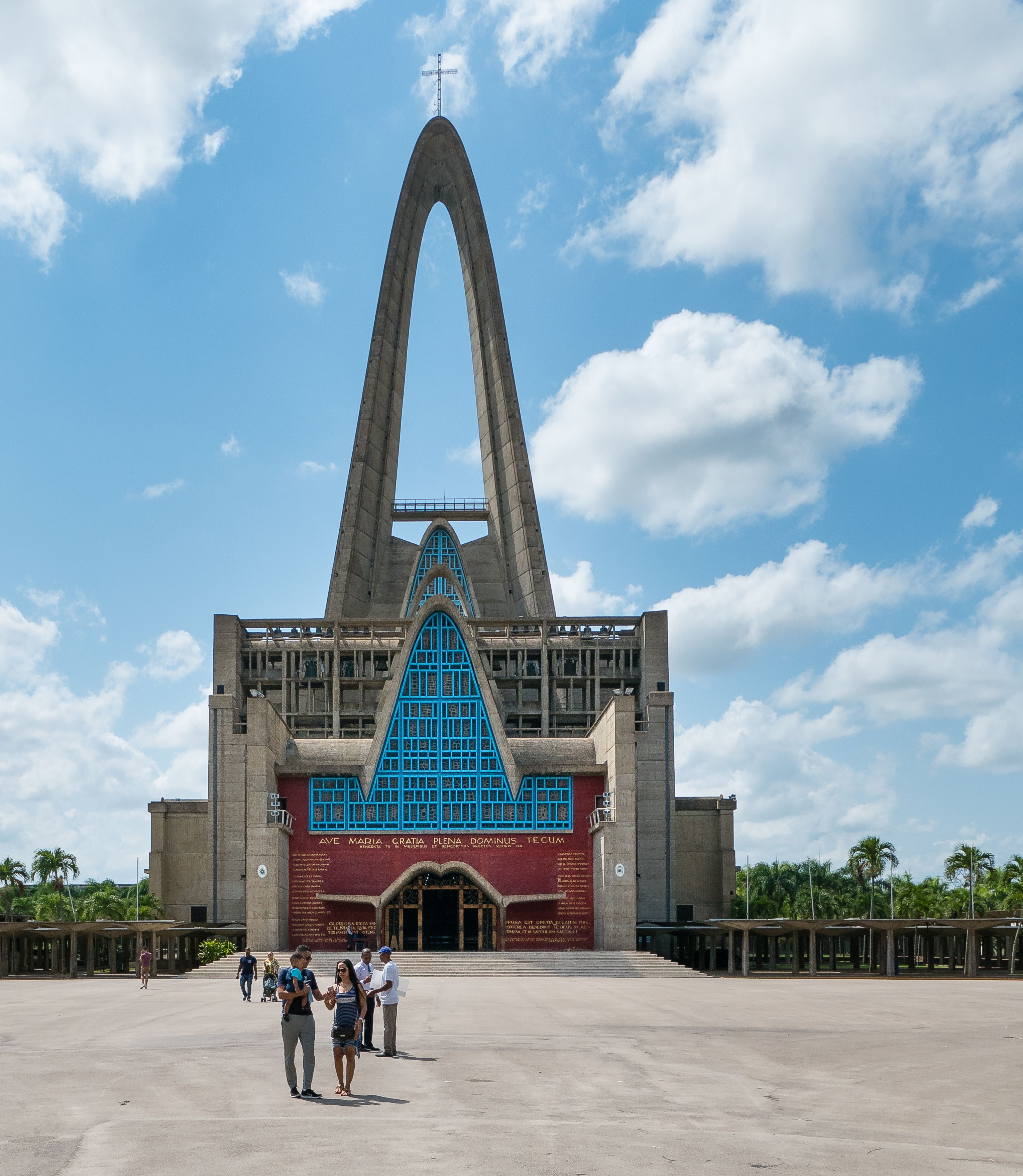|
Miss Mundo Dominicana 2004
The Miss Mundo Dominicana 2004 pageant was held on October 10, 2004. That year only 20 candidates competed for the national crown. The chosen winner, Claudia Cruz, represented the Dominican Republic at the Miss World 2004. The delegates used their intro dress to introduce themselves. After that they each showed their Provincial Costumes, did the swimsuit section and Evening Gown. The judges averaged out the points and then selected a delegate who did the best from their region. They would be given a sash from the region they were representing. Then they got questioned in the Top 6. They selected 3 candidate who answered great. The candidate would get a vote from the audience and the judges together and would get the winner from the highest vote. The winner would go to Miss World and become First Runner Up. In this edition, there is 3 candidate for each Dominican Regions. Results Special awards * Miss Congeniality (voted by contestants) - Yohanna Torres (Valverde Province, Valverd ... [...More Info...] [...Related Items...] OR: [Wikipedia] [Google] [Baidu] |
Claudia Julissa Cruz Rodríguez
Claudia Julissa Cruz Rodríguez (born February 5, 1986, in Bonao) is a Dominican people (Dominican Republic), Dominican actress, TV Host, model and beauty pageant titleholder who represented her Dominican Republic, country at the Miss World 2004 pageant. After representing Bonao and placing only as the fifth runner-up in the Miss Dominican Republic 2004 pageant, which was won by Larimar Fiallo, Cruz decided to take another chance at the new revamped and independent Miss Dominican Republic#Miss Dominican Republic World winners, Miss Mundo Dominicana contest. For the first time ever the contest would be a reality show, the semifinalists being narrowed down by judges and the finalists and winners based on public vote. Having received 66% of the votes, Claudia was named winner on October 10, 2004, only a month before departure to the contest. Despite the lack of time to prepare herself for the Miss World pageant, she won the title of Continental Queen of the Caribbean and finished as ... [...More Info...] [...Related Items...] OR: [Wikipedia] [Google] [Baidu] |
Distrito Nacional
The Distrito Nacional (; D.N.) is a subdivision of the Dominican Republic enclosing the capital Santo Domingo. It is not in any of the Provinces of the Dominican Republic, provinces, but in practice, it acts as a province on its own. Before October 16, 2001, the Distrito Nacional was much larger, including what is now known as Santo Domingo Province. Published statistics and maps generally show the former, larger, Distrito Nacional. The Distrito Nacional has no rural or underdeveloped areas. Points of interest Poligono Central The Poligono Central is the central area of Santo Domingo. Upscale neighborhoods of Naco, Piantini, and Paraiso are located within this central polygon. Most of the financial activity in Santo Domingo is also located in the ''Poligono''. Central Government The Distrito Nacional houses the central government's executive branch Presidential Office (''Palacio Nacional''), the national congressional building (''Congreso Nacional'') and the top judicial court ... [...More Info...] [...Related Items...] OR: [Wikipedia] [Google] [Baidu] |
Bonao
Bonao is a city in the Cibao region of Dominican Republic. It is the capital of the Monseñor Nouel Province, Monseñor Nouel province. The city is located in the center of the country, to the northwest of the national capital Santo Domingo. The city is known as "Villa de las Hortensias" - the town of hydrangeas. The Hydrangea macrophylla, Hortensia is the local flower of Bonao. History Upon the arrival of the Spaniards, the territory belonged to the Taino chiefdom of Maguá. In 1495, Bartolomé Colón, during an exploration journey through the island, ordered the construction of a fortress to combat the resistance of the natives commanded by a chief with the name of Bonao. The first fort built on the site was called Bonao Abajo, which was later occupied by Francisco Roldán, a Spanish soldier who rebelled against the colonial authorities in the island. In 1497, Roldán and 70 rebels, fought in the territory of Bonao against the authority of the Columbus. The rebellion was ended ... [...More Info...] [...Related Items...] OR: [Wikipedia] [Google] [Baidu] |
Cabrera, María Trinidad Sánchez
Cabrera is a town in María Trinidad Sánchez Province, María Trinidad Sánchez province, Dominican Republic. It is located at the eastern end of the country's north coast, at the western extreme of the Scottish Bay, 130 kilometers north of Santo Domingo. The town was originally named 'Tres Amarras', the name it used to be called since its foundation day on July 1, 1891. The city was renamed to 'Cabrera' in honor of the hero of the Capotillo Battle, General José Cabrera. Today Cabrera has a territorial area of 276 km². With a population of over 39,000, Cabrera unlike most towns located on the coasts does not depend so much on tourism. Cabrera’s main source of income is cattle, meat, and milk. In the agricultural aspect, production of coconuts and rice are noticeable sources as well. Located facing the Atlantic, Cabrera has beaches, rivers, exotic vegetation and other natural features and attractions. A National Park reserve is located in El Breton, a small section of Ca ... [...More Info...] [...Related Items...] OR: [Wikipedia] [Google] [Baidu] |
María Trinidad Sánchez Province
María Trinidad Sánchez () is a province of the Dominican Republic. It was split from Samaná Province in September 1959 as Julia Molina Province; in November 1961, it got its current name. The name commemorates a distinguished female soldier in the wars of independence. María Trinidad Sánchez was the first woman incarcerated and executed by Pedro Santana, a Dominican annexionist president. History Before the creation of the province, its territory was part of the Samaná province; It was created in 1959 with the name of the mother of Dictator Rafael Trujillo, Julia Molina. When the government was changed to that of President Bosch, the name was changed to the current one, María Trinidad Sánchez. Economy This province is a great producer of rice, coconut, cocoa, fishing among other agricultural products. Cattle cattle production. It is of a great tourist vocation due to the large number of beaches it has on its coasts and the beautiful natural landscapes it has. It has of int ... [...More Info...] [...Related Items...] OR: [Wikipedia] [Google] [Baidu] |
Jarabacoa
Jarabacoa is a town and the second largest municipality in La Vega Province, Dominican Republic. History The indigenous Taino people originally inhabited the valley of Jarabacoa. It is assumed that the town's name was formed out of the words 'Jaraba' and 'Coa', meaning "Land of Waters" in the Taíno language. The Spanish conquistadors made it to Jarabacoa in their search for gold, but later abandoned the expedition due to violent resistance by the natives in the area, to this day gold can be washed from some of the many rivers. Jarabacoa most likely belonged to the Chiefdom of Maguana making it part of the kingdom of Cibao. During the colonization period, the Spaniards settled in Jarabacoa working in mines and later established some cattle herds. At the end of the 1700s there were several Spanish families living in Jarabacoa. The area experienced its greatest population growth at the beginning of the 1800s from whites who migrated from other parts of the island after the slav ... [...More Info...] [...Related Items...] OR: [Wikipedia] [Google] [Baidu] |
La Vega Province
La Vega () is a province of the Dominican Republic. Until 1992 it included what is now Monseñor Nouel province. History The first settlement made by Christopher Columbus in the area was on December 8, 1494. Its initial economic development was based on gold mining. In the early 16th century, it had a cathedral, plus two convents, the fort, a building that functioned as a hospital, and administration buildings. In La Vega the first coin was minted and the first merchants settled. It is also the site of one of the mayor battles between Spaniards and indigenous people. On December 2, 1562, the city was destroyed by an earthquake, being moved to the southern bank of the Camú River. The second foundation of the city corresponds to its current location and it is believed that it took place between the years 1562 and 1563. During the 17th and 18th centuries the area suffered a decline. By the first decades of the 1700s, the city of La Vega had a population that approached only 3,000 ... [...More Info...] [...Related Items...] OR: [Wikipedia] [Google] [Baidu] |
La Romana, La Romana
La Romana is a municipality and capital of the southeastern province of La Romana, opposite Catalina Island. It is one of the 10 largest cities in the Dominican Republic with a population estimated in 2010 at 130,426 within the city limits ( metropolitan population: 214,109), of whom 127,623 are urban and 2,803 are rural. The name ''Romana'' comes from the word "Bomana", a name given by Indians to what is known today as Romana River. The modern La Romana International Airport was opened in 2000. The city is near several other cities, such as San Pedro de Macorís and the national capital, Santo Domingo de Guzmán. The city is a hub for a growing tourist industry with several nearby local resort spots, such as the beachfront Bayahibe, Dominicus, Casa de Campo, and the growing number of golf resorts that surround the area. History The city of La Romana was officially founded in 1897 as an oil town. After 1917 with the construction of a large sugar-mill the economy quickly shi ... [...More Info...] [...Related Items...] OR: [Wikipedia] [Google] [Baidu] |
La Romana Province
La Romana () is a province of the Dominican Republic. The capital is also named La Romana, and is the third-largest city in the country. La Romana was elevated to the category of province in 1944. File:Catalina Island, La Romana, Dominican Republic. A cruise liner in coast waters of Catalina Isl, approaching the rocky shore. (landscape, view from the shore).jpg La Romana is also home to ''Casa de Campo'', one of the world's largest resorts and top golfing destinations, including the Teeth of the Dog golf course. Many international and local artists perform at "Altos de Chavón", an artistic community and university. La Romana is a port city ranked as Dominican Republic's 7th-largest by population (around 130,000, metro around 215,000). The city is located opposite Catalina Island, and approx 80 km (50 mi) from Santo Domingo. Its name comes from a balance used to weigh merchandise for export. Town's patron saint is Santa Rosa de Lima. History The province was created on ... [...More Info...] [...Related Items...] OR: [Wikipedia] [Google] [Baidu] |
Villa Hermosa
Villa Hermosa is a town in the La Romana province of the Dominican Republic The Dominican Republic ( ; es, República Dominicana, ) is a country located on the island of Hispaniola in the Greater Antilles archipelago of the Caribbean region. It occupies the eastern five-eighths of the island, which it shares wit .... Villa Hermosa’s population live from small businesses in the same area as electricity services, supermarkets, beauty centers and other. References Sources * – World-Gazetteer.com Populated places in La Romana Province Municipalities of the Dominican Republic {{Municipalities of the Dominican Republic ... [...More Info...] [...Related Items...] OR: [Wikipedia] [Google] [Baidu] |
La Altagracia Province
La Altagracia () is the easternmost province of the Dominican Republic. Punta Cana is located on the eastern shores of this province. The province was part of the old La Altagracia Province, which split into 2, La Altagracia Province and La Romana Province on February 27, 1961. The name "La Altagracia"' meaning the "High Grace" commemorates a painting, ''Our Lady of La Altagracia'', which was brought to this area from Spain in the early 16th century. Numerous miracles are attributed to the image. Currently it is the leading province of the country in terms of tourism, this province has the luxury of having the Punta Cana International Airport which is the most important airport on the island. History By 1505, Juan de Esquivel conquered the Taino chiefdom of Higuey and founded a fortress which he converted in 1506 by order of Ovando into a town, calling it Salvaleón de Higuey. Years later, by Royal Privilege dispatched from Seville on December 7, 1508, this town was awarded ... [...More Info...] [...Related Items...] OR: [Wikipedia] [Google] [Baidu] |
Independencia Province
Independencia () is a province of the Dominican Republic, located in the west, on the border with Haiti. Its capital is Jimani. The province was created in 1948 but was made official in 1950. Before its creation, it was part of the Baoruco Province. The name was given in remembrance of the National Independence of February 27, 1844. History The province Independencia was founded in the lands that in previous times belonged to a Cacique called Ximani who was related to the cacicazgo of Xaragua. Little is known of Ximani as the ties with between the natives of Ximani and the Spanish were practically non-existent. The law that created this province, December 29, 1948, had originally assigned the name of "Provincia de Jimaní" to the province. The name was then changed January 28, 1949, to "Provincia Nueva Era". The name was then finally changed to the present one, "Independence", on May 13, 1949. Municipalities and municipal districts The province as of June 20, 2006, is divid ... [...More Info...] [...Related Items...] OR: [Wikipedia] [Google] [Baidu] |


.jpg)




